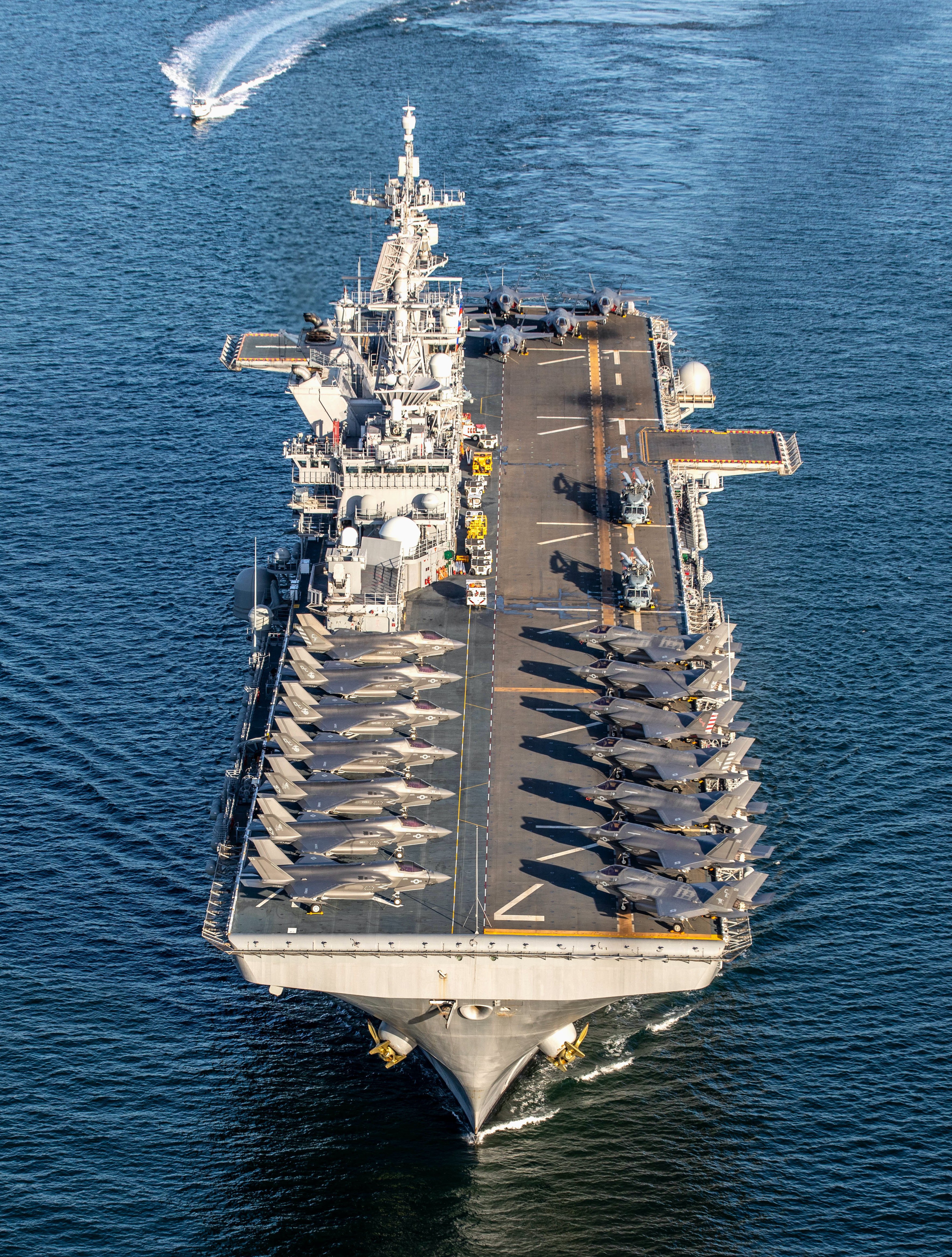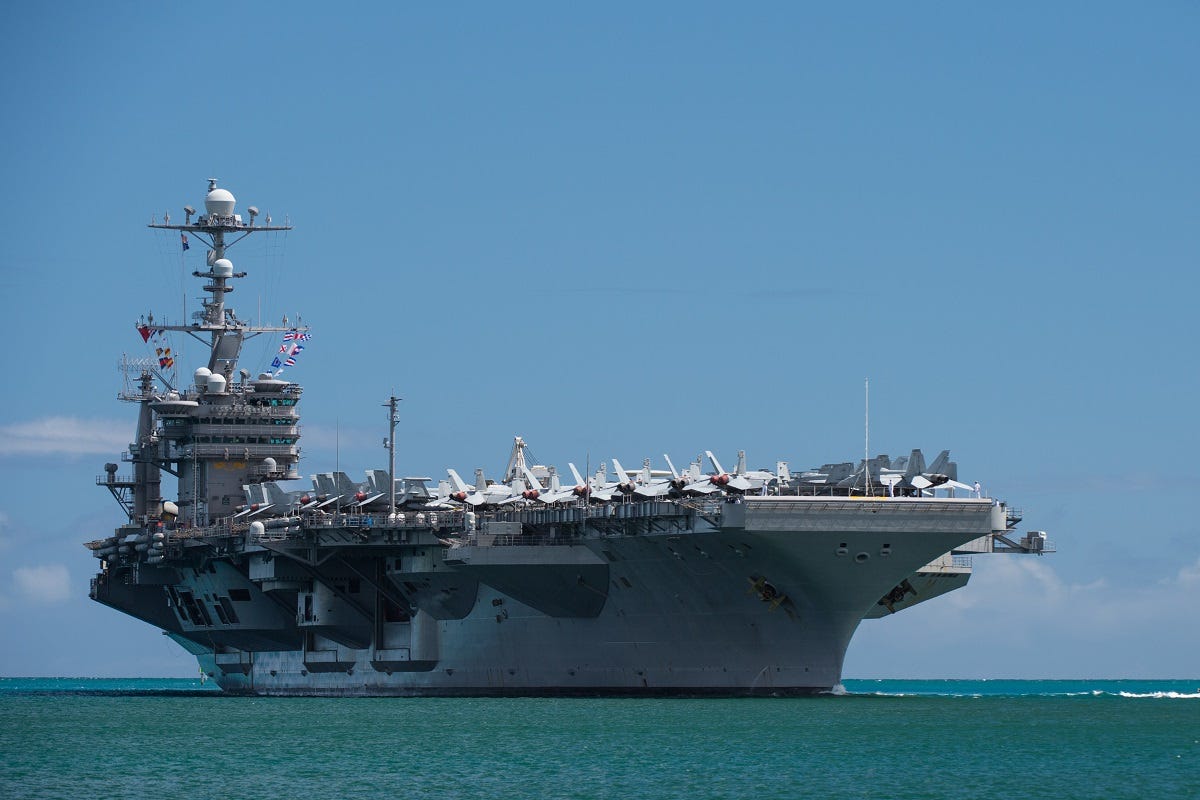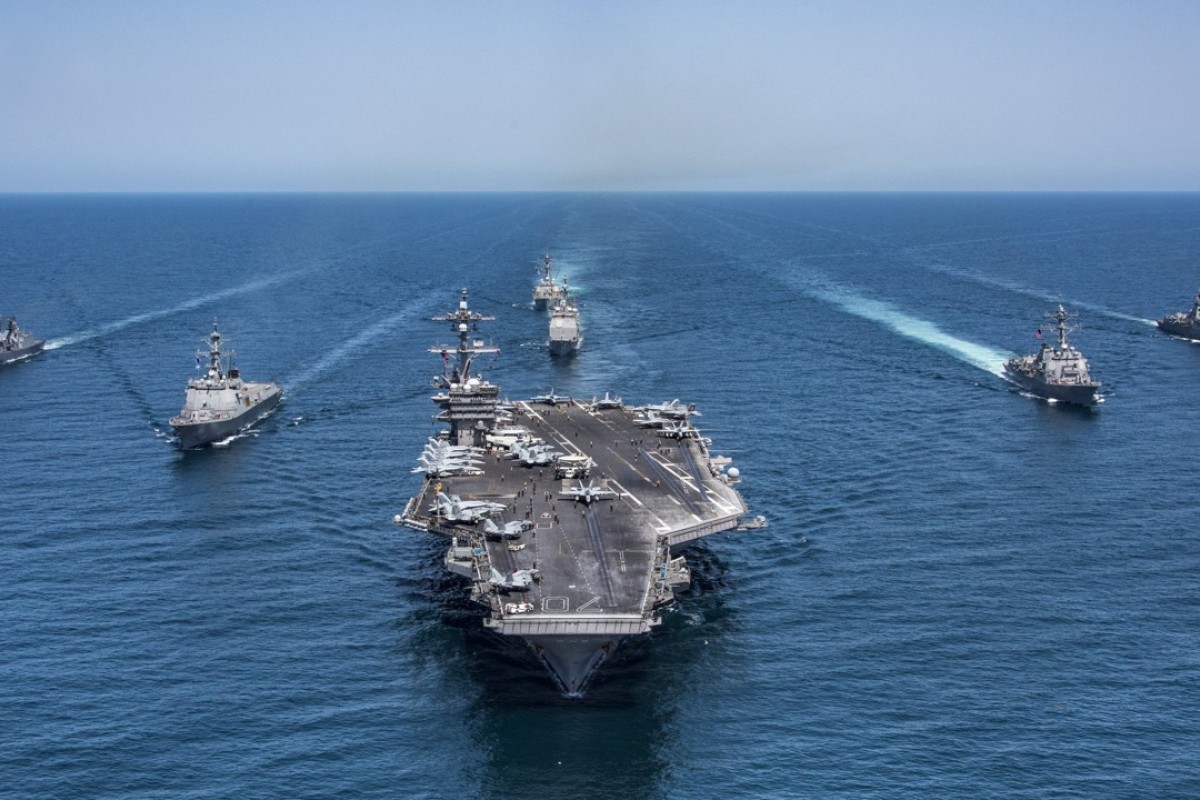Aircraft Carrier Obsolete - "As that capability evolves, you could then put missiles on such a ship; for example, you might end up with a destroyer or cruise with a screen of unmanned surface ships in front of it," Cancian said.
China has boasted about its DF-21D and DF-26 anti-ship missiles, which have ranges of 1,100 and 2,500 miles, respectively. Both Russia and China are also developing hypersonic weapons that can fly at five times the speed of sound and evade current air defense systems.
Aircraft Carrier Obsolete

Being enormous and technologically complex pieces of hardware, you will not be surprised to hear that it takes years to build an aircraft carrier. Depending on their size, most aircraft carriers tend to take around 5 to 6 years to build, but some take considerably longer.
Aircraft Carriers Are Costly And Hard To Replace
An unmanned combat aerial vehicle (UCAV), is a fighter-sized craft capable of landing, and taking off, from an aircraft carrier. It can even be refueled mid-flight. Crafts like this might be on the cards for future aircraft carrier fighter wings.
The brainchild of H. I. Sutton (author of the Covert Shores website), these vessels would require minimal personnel to operate. Deck robots and other autonomous systems could be used to do most of the heavy loading.
Drones could be deployed either by surfacing and launching from short flight decks, or by using launch tubes. Such a capability would offer this new type of "carrier" a much better chance of survival, while also potentially gaining them the element of surprise.
"Our fleet is too small, and our capabilities are stacked on too few ships that are too big," he said. "And that needs to change over time. (But) we have made significant investments in aircraft carriers, and we're going to have those for a long time."
How Long Does An Aircraft Carrier Take To Build?
For a country like the United States, the United Kingdom, or even Russia, an aircraft carrier conveys the appearance of military might and continued global relevance. For China and India, aircraft carriers convey modernity and demonstrate great power status.

While the price these countries are paying may appear very high, such demonstrations have long been part of great power defense statecraft. There are trade-offs between price and firepower. The amphibious ship only costs $3.4 billion per hull while carrying half the number of aircraft a full-size carrier can.
And planes like the Boeing Super Hornet, which can hold more ordnance than F-35s, need a catapult to take off from a ship. They can't deploy from large-deck amphibious ships. It’s hard to say carriers are obsolete because they cannot be protected in a full on war.
Considering 90%+ of a carrier's life is operating in non-war environments, they are purpose built for that 90% non-war purpose. The ability to rapidly establish such a powerful military presence in any part of the world is a massive deterrent, and contributes heavily to any political dialogue occurring with foreign nations.
New Capabilities On Uss Ford
This value must be factored in when looking at the price tag of a new carrier group. It’s probably prevented 10x as many wars than any carrier has ever engaged in directly. Requiring a massive expenditure to build and maintain, and with newer cheaper, and with faster-to-build technologies like anti-ship missiles and drones emerging, does it make sense to keep them afloat?
Let's take a look at what the future of aircraft carriers might be. The contract was awarded to Northrop Grumman, which forms part of the larger DARPA Tactically Exploited Reconnaissance Node program. Such systems will combine vertical takeoff and landing drones that can fly for long distances equivalent in range, or longer, to conventional fixed-wing planes.
Instead of giving up on aircraft carriers, the Navy needs to develop new concepts for using them, he said at the USNI Defense Forum in Washington on Dec. 6, according to Defense News. Upcoming, large-scale war-games will help flesh out those ideas.
But he indicated the direction of change will be toward spreading out forces, becoming less vulnerable to a single, catastrophic loss. Like most new Pentagon programs, the ship has been plagued with problems with its new high-tech systems.

Are Aircraft Carriers Still Relevant?
An issue with the General Electric (GE) propulsion system sent the ship back to port during testing in 2018. GE and Huntington Ingalls are pushing each other to pay for the fix. But getting rid of them altogether is unlikely.
Earlier this year, the service proposed retiring the Nimitz-class USS Truman 25 years early to save money. Vice President Mike Pence pushed back, and the Navy ditched that idea. A 19FortyFive Contributing Editor, Dr. Robert Farley has taught security and diplomacy courses at the Patterson School since 2005. He received his BS from the University of Oregon in 1997, and his Ph.
D. from the University of Washington in 2004. Dr. Farley is the author of Grounded: The Case for Abolishing the United States Air Force (University Press of Kentucky, 2014), the Battleship Book (Wildside, 2016), and Patents for Power: Intellectual Property Law and the Diffusion of Military Technology (University
of Chicago, 2020). He has contributed extensively to a number of journals and magazines, including the National Interest, the Diplomat: APAC, World Politics Review, and the American Prospect. Dr. Farley is also a founder and senior editor of Lawyers, Guns and Money.
Did Aircraft Carriers Replace Battleships?
Any assessment we do must consider cost, survivability, and the critical national requirement to sustain an industrial base that can produce the ships we need — ships that will contribute to a superior, integrated naval force for the 2030s and far beyond."
Huntington Ingalls (HII) christened the second ship of the new Ford-class carriers — the USS John F. Kennedy — on Dec. 7. The Navy said this month that another Ford-class carrier will be named after Doris Miller, an African American hero of Pearl Harbor.
"Because they are big, expensive platforms, they are difficult to replace if one of them is lost — a major defeat," said Mike McMahon, a senior policy researcher at RAND. "So there is a certain amount of risk aversion in using them in some scenarios."
Of course, such myths were soon dispelled with major battleship engagements like the Battle of Jutland, where the British fleet lost several battleships and battlecruisers — one of the Royal Navy's worst losses in an engagement.
Ford Class Next-Generation Aircraft Carrier
But the day would come when these enormous juggernauts would meet their match from a new form of military technology — aircraft. One change in how a carrier's air wing operates may already be in the works.
Boeing is developing the MQ-25-Stingray for the Navy. The carrier-launched drone is meant to refuel Boeing (BA) F/A-18s and Lockheed Martin (LMT) F-35s in midair, extending their range. That also allows aircraft carriers to sail farther away from shore — and beyond the range of new anti-ship missiles.
Future drones could further remake the mix of aircraft for the carrier's air wing. Sutton envisages such a vessel using ballast tanks to raise or lower itself in relation to sea level. These crafts could also be semi-submersible, lowering to surface level when not in combat.
Or, versions of this type of aircraft carrier could also be fully submersible, as with traditional subs. But the USS Arizona and USS Oklahoma were not the first battleships in history to be sunk by airborne attackers.
What Will Replace Aircraft Carriers?
Almost 20 years earlier, in 1921, the captured battleship, the German Ostfriesland, was sunk during air trials in a demonstration of the potential benefit of airborne attacks on a battleship. The anti-access/area defense system-of-systems (A2/AD) developed by China may not be nearly as lethal in operation as it is in principle, and in any case, there are many targets softer than the littoral of the PRC
. Aircraft carriers still provide mobile airfields that are arguably more survivable than static facilities. Even if carriers are at risk in specific high-intensity combat scenarios, they remain effective in dozens of other conceivable military operations.

Notice: Information contained herein is not and should not be construed as an offer, solicitation, or recommendation to buy or sell securities. The information has been obtained from sources we believe to be reliable; however, no guarantee is made or implied with respect to its accuracy, timeliness, or completeness.
Authors may own the stocks they discuss. The information and content are subject to change without notice. On the negative side of the ledger, Russia seems likely to opt-out of the naval aviation game for the foreseeable future, as the Admiral Kuznetsov does not appear likely to return to service soon and the cadre of naval aviators capable of operating from carriers is
Could Drones Spell The End Of Aircraft Carriers?
rapidly disappearing. Brazilian naval aviation does not seem to have survived the failed effort to rehabilitate the Sao Paulo (the former French Foch), although Brazil's acquisition of the former HMS Ocean means that a helicopter platform is still available.
Russia and Brazil have determined that the cost of building (or buying) and maintaining an aircraft carrier is too high for the likely return in power and prestige. However, many other countries continue to come to the opposite conclusion, and that should give the analysts who have been predicting the impending demise of the carrier since 1945 some pause.
You may have heard the saying that "History doesn't repeat itself, but it often rhymes". From triremes to the mighty battleships of recent times, could the aircraft carrier become the next superpower to be resigned to become a thing for the history books?
Well, to summarize, the bottom line is this: Aircraft carriers have been around for over a century now and are still very formidable war machines indeed. This is for one main reason — aircraft carriers are not just about the ship itself.
Part of the story is the availability of the F-35B, a fifth-generation fighter that can operate from the decks of small, affordable aircraft carriers. While the fighter itself is expensive and has a necessarily limited customer base (due to US technology controls), it does offer a small carrier an unprecedented opportunity to contest air superiority and to conduct medium-range strike operations.

The fighter fleets of British, Italian, and Japanese naval aviation depend entirely on the F-35B. Spain, Turkey, and Australia all operate ships that could carry F-35Bs, although fiscal, legal, and organizational issues respectively have prevented the acquisition of the jets.
In 2016, the Center for a New American Security urged canceling the Ford program after the second ship and boosting drone aircraft and submarines instead. And in December 2018, a Congressional Budget Office report titled "Stop Building Ford Class Aircraft Carriers" weighed canceling the program after three ships.
"Most of the things that people came up with as alternatives have some very significant limitations in the amount of ordnance, amount of time they can stay on station," said Brad Martin, a senior policy researcher at RAND.
Naval Sea Systems Command, a US Navy subsidiary, said it had agreed to sell the USS Kitty Hawk and the USS John F. Kennedy to International Shipbreaking Limited, which is based in Brownsville, Texas, USA Today reported.
The late Sen. John McCain pushed for the development of smaller carriers based on the amphibious assault ship USS America built by Huntington Ingalls. That flat-top ship can hold 34 aircraft, including F-35s and the MV-22 Osprey tilt-rotor, which is made by a joint venture between Boeing and Textron's (TXT) Bell unit.
The study will look into various combinations of manned and unmanned aircraft, as well as the cost-benefit of nuclear and more conventional power systems. Concerns around the massive investment needed to build them and rising threats to carriers from long-range, accurate ballistic missiles, air, and seaborne drones, and other low-cost threats, could put the future viability of carriers in serious doubt.
The question goes to the core of modern naval procurement, and not just in the United States. The People's Liberation Army has assembled a vast array of systems designed to destroy aircraft carriers and thus deter them from entering contested waters.
At the same time, the PLAN is in the process of fitting out its third (and largest) carrier, with additional vessels apparently on the way.
us carriers sunk in ww2, china new carrier already obsolete, why aircraft carriers are obsolete, list of world aircraft carriers, are navies obsolete, retired aircraft carriers on display, carrier obsolete products, where are the aircraft carriers
